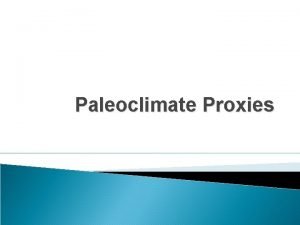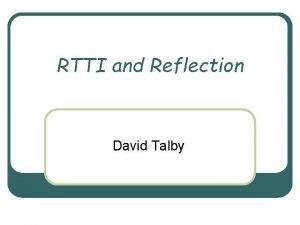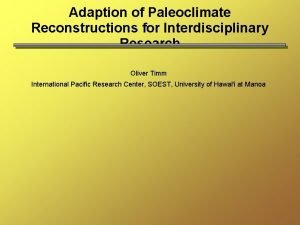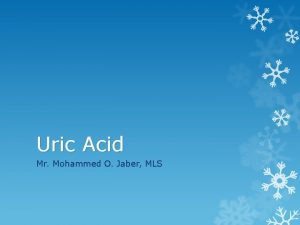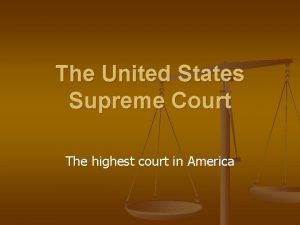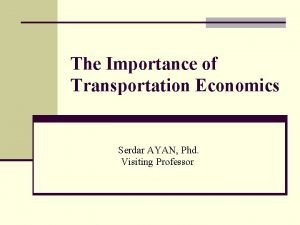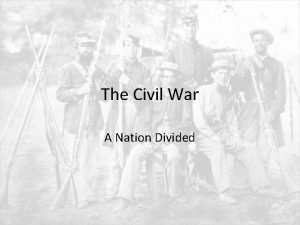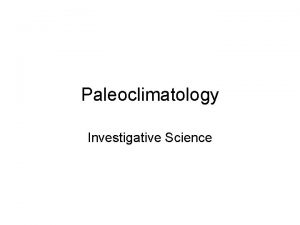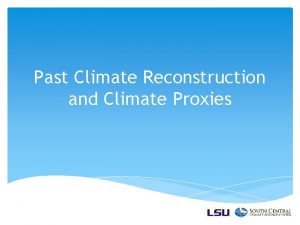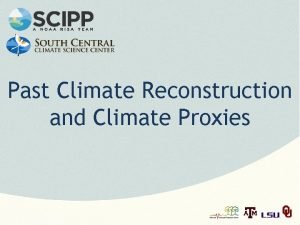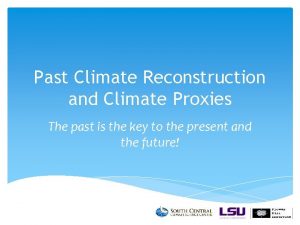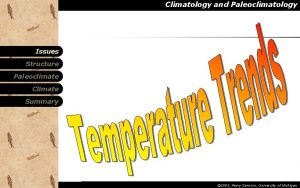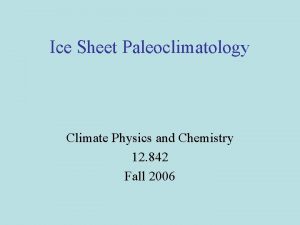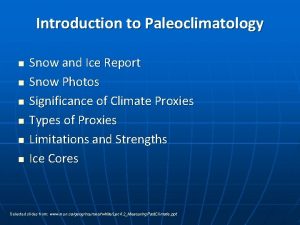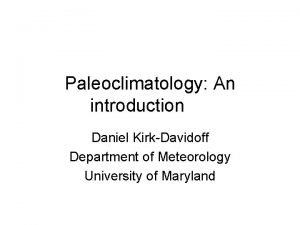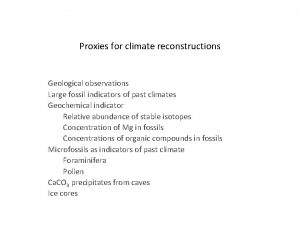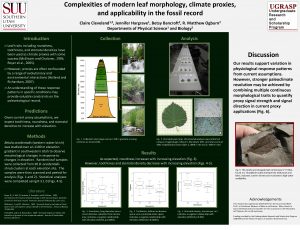Paleoclimatology n n Introduction Significance of Climate Proxies
















- Slides: 16

Paleoclimatology n n Introduction Significance of Climate Proxies Role of Proxies in Reconstructing Past Climate Limitations and Strengths For Next Class: Read and Watch Ice Core Videos at: https: //icecores. org/about-ice-cores Selected slides from: www. mun. ca/geog/courses/rwhite/Lec 4. 2_Measuring. Past. Climate. ppt

Driving Question Ø How and why do scientists reconstruct the climate record prior to the instrumental era? © AMS 2

The Earth has exhibited substantial warming over the past ~100 years. Ø Paleoclimatology (the study of past climates), can help place this warming in the context of natural climate variability. Ø Until recently, most reconstructions of climate variations over the last ~1000 years focused on specific locations or regions. Ø

Because widespread, reliable instrumental records are available only for the last~100 -150 years, scientists estimate climatic conditions in the more distant past by analyzing proxy evidence.

Reconstructing Past Climates: Why and How? Ø Climate reconstruction l l l © AMS Improves our understanding of environmental response to climate variability and climate change Provides perspective on current climate Requires identification of a link between quantitative climate forcing and environmental response 5

What kinds of climate proxies can be used to estimate surface temperatures (last 2000+ years)?

What kinds of climate proxies can be used to estimate surface temperatures (last 2000+ years)? Ø Ø Ø Ø Ø Tree rings Corals Ocean and lake sediments (varves) Cave deposits (speleothems) Ice cores Pollen deposits Packrat middens Glaciers Documentary evidence (historical records, paintings, etc. )

Deciphering Past Climates © 2018 Pearson Education, Inc. Figure 10. 1

Ocean Sediment Cores © 2018 Pearson Education, Inc. Figure 10. 4

Ice Cores Figure 10. 5 © 2018 Pearson Education, Inc. Figure 10. 6

Corals © 2018 Pearson Education, Inc. Figure 10. 12

Climate Proxies Ø Which of the climate proxies excites you the most? Why? © AMS 12

How are proxy data used to reconstruct climate? For most proxies, statistical techniques are used to define the relationship between the proxy measurements and the concurrent instrumental records. Ø Then, this relationship is used to reconstruct the past climate from the remaining proxy data. Ø

Steps involved Collect proxy data Dating the proxy data (e. g. , matching growth rings of trees to calendar year) Ø Calibration – usually, this involves using regression to relate the proxy measurement to know climatic conditions Ø Validation – basically tests the skill of the calibration Ø Reconstruction – once the proxy/climate relationship is established, we again use regression to predict what past climate was like Ø Ø

What are the limitations and strengths of large-scale climate reconstructions? 1. The instrumental record is short (~100 -150 years at most) Ø 2. The relationship between the proxy data and the climate variable being reconstructed (e. g. , temperature) may have varied over time. Ø 3. There is no consensus among scientists as to which statistical methods/formulae are most appropriate for calibrating and validating the models. Ø 4. Spatial limitations – collecting proxy data is both time consuming and expensive. Ø

Key strengths of proxy measures Ø Ø 1. Proxy records are meaningful recorders of environmental variables. 2. Tree ring-derived data are especially valuable in climate reconstruction as they often represent regions (i. e. , multiple sites within a region are sampled and replication is a key element of the scientific method). 3. Most surface temperature reconstructions incorporate proxy data from a variety of sources over wide geographic areas. 4. The same general trends (e. g. , temperature trends) emerge from multiple reconstructions.
 What is paleoclimatology
What is paleoclimatology Java reflection api
Java reflection api Paleoclimate proxies
Paleoclimate proxies Climate change 2014 mitigation of climate change
Climate change 2014 mitigation of climate change Apushreview.com
Apushreview.com Christine counsell significance
Christine counsell significance Uric acid clinical significance
Uric acid clinical significance Marshall case
Marshall case Marshall plan
Marshall plan Gideon v wainwright significance
Gideon v wainwright significance What is the significance of the northwest ordinance? *
What is the significance of the northwest ordinance? * You've always been a tourist here kite runner
You've always been a tourist here kite runner Economic significance of transportation
Economic significance of transportation Fur coat summary
Fur coat summary Reynolds number significance
Reynolds number significance Surrender at appomattox court house significance
Surrender at appomattox court house significance Sherman's march significance
Sherman's march significance
